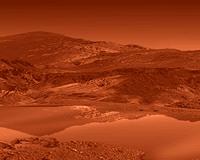 |
Pasadena CA (JPL) Jun 07, 2010 NASA's Cassini spacecraft will be eyeing the north polar region of Saturn's moon Titan this weekend, scanning the moon's land o' lakes. At closest approach on early morning Saturday, June 5 UTC, which is Friday afternoon, June 4 Pacific time, Cassini will glide to within about 2,000 kilometers (1,300 miles) of the Titan surface. Cassini will make infrared scans of the north polar region, which was in darkness for the first several years of Cassini's tour around the Saturn system. The lighting has improved as northern spring has started to dawn over the area. The visual and infrared spectrometer will be prime during closest approach, but the imaging science subsystem cameras will also be taking pictures. Among the scientific bounties, Cassini team members are hoping to get another good look at Kraken Mare, the largest lake on Titan, which covers a greater area than the Caspian Sea on Earth. Although this latest flyby is dubbed "T69," planning changes early in the orbital tour made this the 70th targeted flyby of Titan.
Share This Article With Planet Earth
Related Links http://www.jpl.nasa.gov Explore The Ring World of Saturn and her moons Jupiter and its Moons The million outer planets of a star called Sol News Flash at Mercury
 What Is Consuming Hydrogen And Acetylene On Titan
What Is Consuming Hydrogen And Acetylene On TitanPasadena CA (JPL) Jun 07, 2010 Two new papers based on data from NASA's Cassini spacecraft scrutinize the complex chemical activity on the surface of Saturn's moon Titan. While non-biological chemistry offers one possible explanation, some scientists believe these chemical signatures bolster the argument for a primitive, exotic form of life or precursor to life on Titan's surface. According to one theory put forth by as ... read more |
|
| The content herein, unless otherwise known to be public domain, are Copyright 1995-2010 - SpaceDaily. AFP and UPI Wire Stories are copyright Agence France-Presse and United Press International. ESA Portal Reports are copyright European Space Agency. All NASA sourced material is public domain. Additional copyrights may apply in whole or part to other bona fide parties. Advertising does not imply endorsement,agreement or approval of any opinions, statements or information provided by SpaceDaily on any Web page published or hosted by SpaceDaily. Privacy Statement |